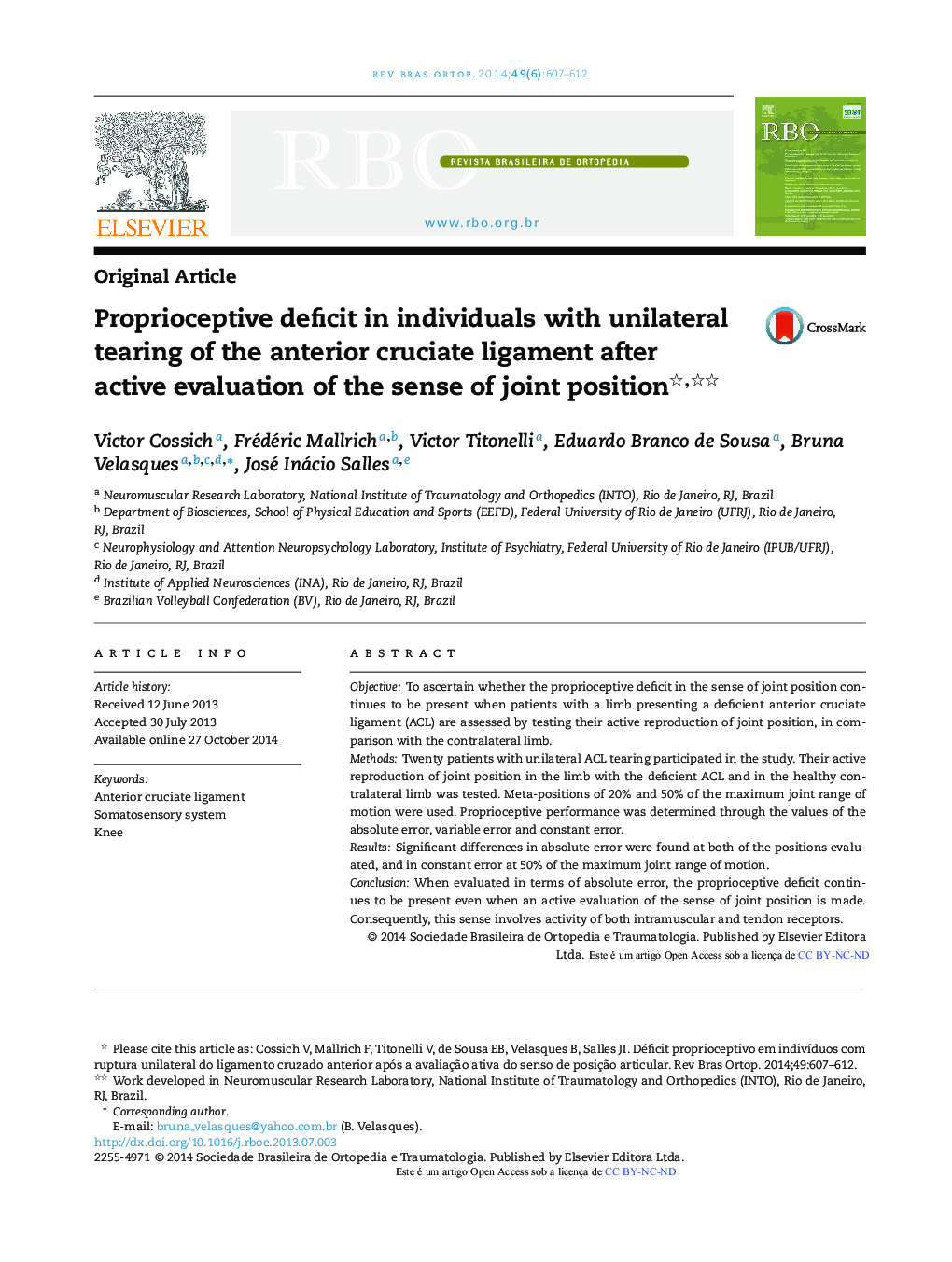| Article ID | Journal | Published Year | Pages | File Type |
|---|---|---|---|---|
| 2708390 | Revista Brasileira de Ortopedia (English Edition) | 2014 | 6 Pages |
ObjectiveTo ascertain whether the proprioceptive deficit in the sense of joint position continues to be present when patients with a limb presenting a deficient anterior cruciate ligament (ACL) are assessed by testing their active reproduction of joint position, in comparison with the contralateral limb.MethodsTwenty patients with unilateral ACL tearing participated in the study. Their active reproduction of joint position in the limb with the deficient ACL and in the healthy contralateral limb was tested. Meta-positions of 20% and 50% of the maximum joint range of motion were used. Proprioceptive performance was determined through the values of the absolute error, variable error and constant error.ResultsSignificant differences in absolute error were found at both of the positions evaluated, and in constant error at 50% of the maximum joint range of motion.ConclusionWhen evaluated in terms of absolute error, the proprioceptive deficit continues to be present even when an active evaluation of the sense of joint position is made. Consequently, this sense involves activity of both intramuscular and tendon receptors.
ResumoObjetivoVerificar se o déficit proprioceptivo no SPA permanece quando pacientes com um membro LCA deficiente são avaliados por meio do teste de reprodução ativa da posição articular, em comparação com o membro contralateral.MétodosParticiparam do estudo 20 pacientes com ruptura unilateral do LCA. Foi feito o teste de reprodução ativa da posição articular no membro LCA deficiente e contralateral saudável. Foram usadas as posições meta de 20% e 50% da amplitude articular máxima. O desempenho proprioceptivo foi determinado por meio dos valores de erro absoluto (EA), erro variável (EV) e erro constante (EC).ResultadosDiferenças significativas foram encontradas para o EA em ambas as posições avaliadas e para o EC em 50% AAM.ConclusãoO déficit proprioceptivo quando avaliado pelo EA permanece mesmo quando a avaliação do senso de posição articular é ativa e, consequentemente, envolve a atividade de receptores intramusculares e tendíneos.
